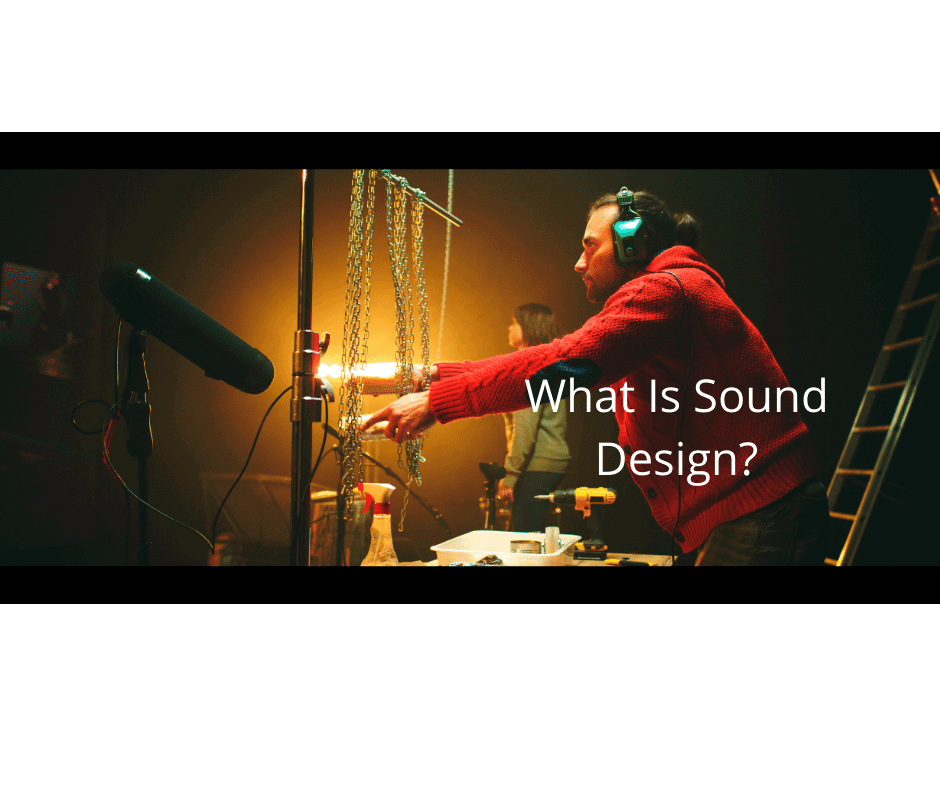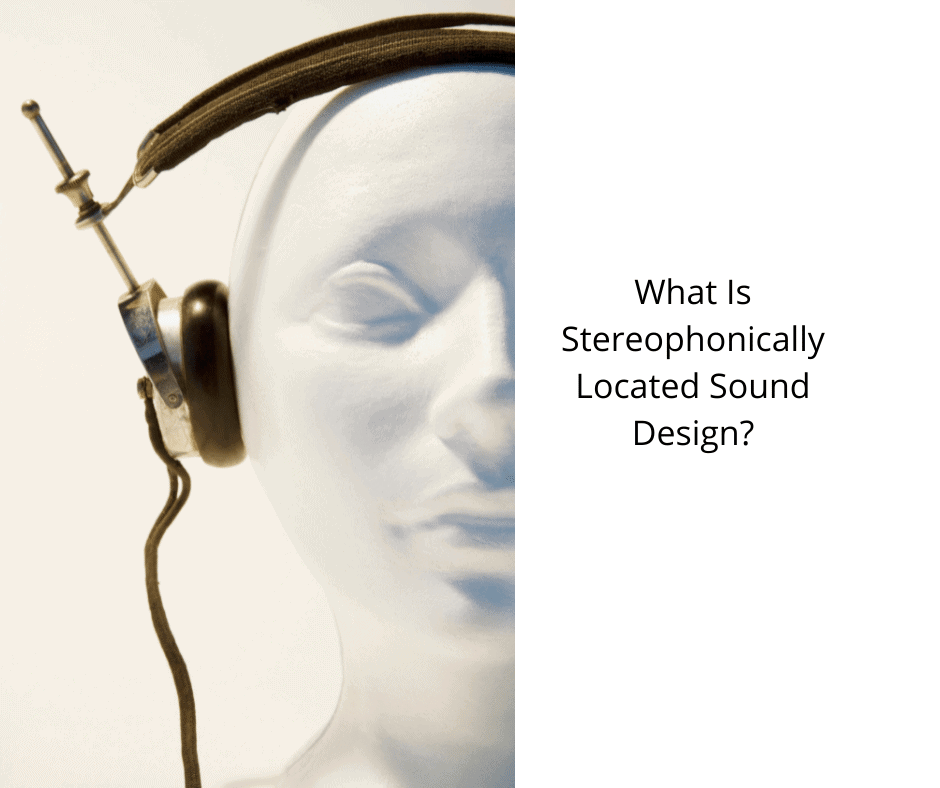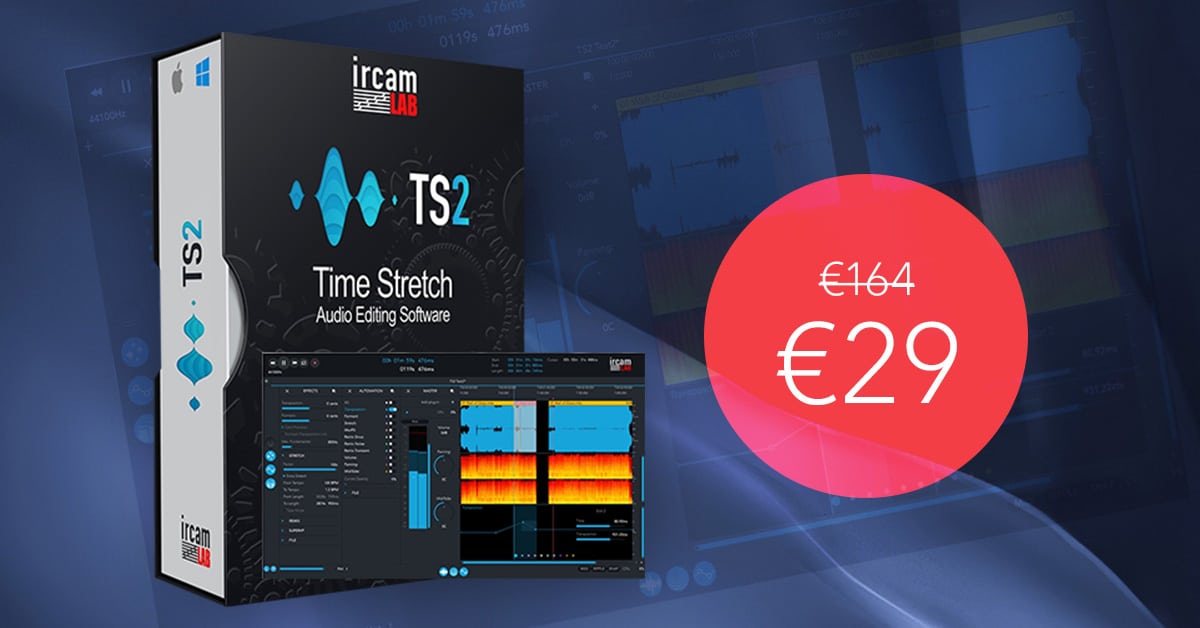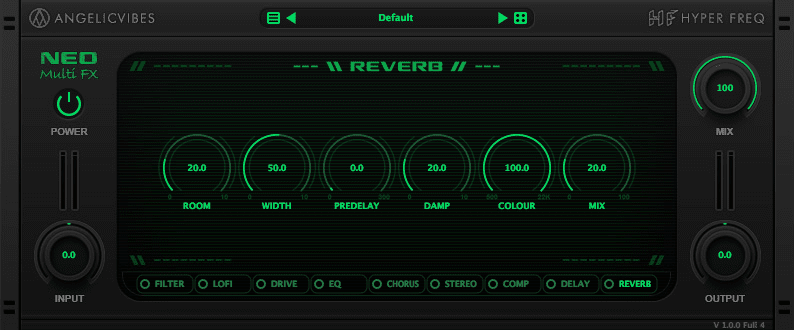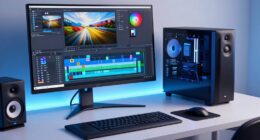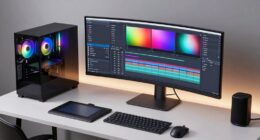Unless you work in audio or video production, you probably haven’t thought much about sound design. Even if you’re unfamiliar with the term, you’ve benefited from sound design in one way or another. Ever been to a movie with particularly effective sound effects? Chances are good that a sound designer was responsible for creating those effects.
Sound design is the art of creating audio tracks. It involves acquiring and incorporating various auditory elements and audio production techniques to create a particular effect. There are many types of sound design: cinematic sound design and Foley sounds. Equalizers are also available. The techniques used in sound design can vary from simple to complex. Sound design basics involve understanding the principles of sound, such as frequency, amplitude, and phase. It also includes mastering the use of audio editing software and sound processing tools. Sound designers often experiment with different combinations of audio elements to achieve the desired emotional impact in a scene. The ability to manipulate sound and create unique sonic landscapes is what sets skilled sound designers apart in the field.
The ABCs of Sound Design
Sound design is creating or selecting sounds for a specific purpose. In movies and television, sound designers are responsible for everything from choosing the perfect piece of background music to creating realistic (and often otherworldly) sound effects. In video games, the sound design creates everything from the soundtrack to the sound effects of in-game actions.
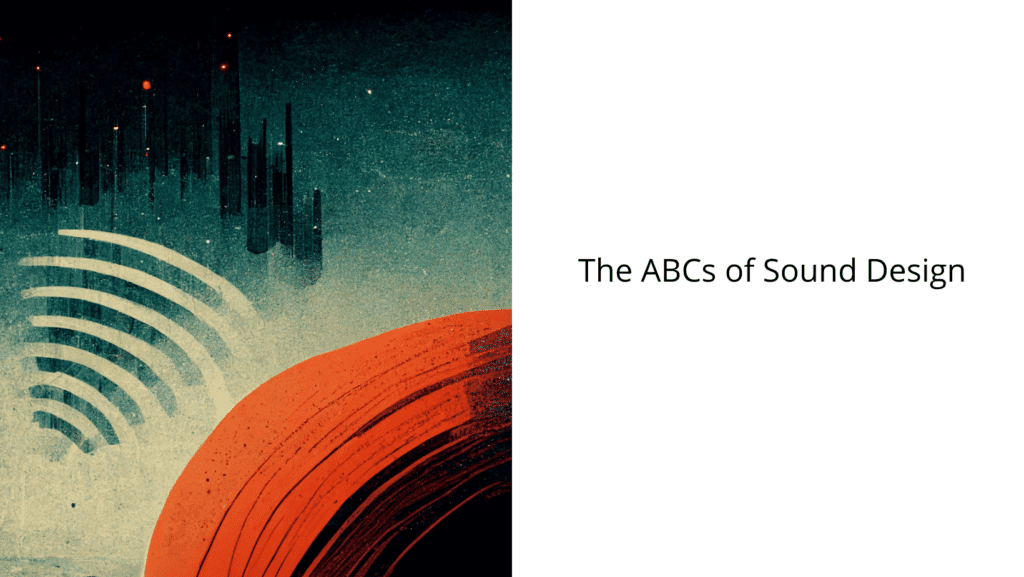
One of the essential aspects of sound design is ensuring that the sounds chosen fit the tone and mood of the project. For instance, a lighthearted comedy will have a very different soundtrack than a horror movie. In both cases, though, the goal is to use sound to enhance the viewing or playing experience and create an immersive environment that draws viewers or players into the story.
Sound design can also be used to send a more subliminal message. In some cases, producers may want viewers to feel a certain way but don’t want to be obvious about it—in which case they might use specific sounds to give viewers an emotional cue without them even realizing it. For example, a spaceship whooshing overhead might signal that something exciting is about to happen, while a slow, menacing heartbeat could cue viewers that danger is lurking just around the corner.
Sound Designers
Sound design is an art form that’s often taken for granted. It’s hard to imagine a film without music or dialogue, but what about the sounds you overlook? Ambient noise, background details, and even sound absence can all contribute to a good or bad experience with video. Sound designers use these elements to tell a story using just audio.
Sound Design Respires Life Into a Project
Sound design, however, is the art of manipulating audio to breathe life into a project. It’s a creative process that involves manipulating sounds to make them more suitable for a project. It’s an essential part of filmmaking and can also be used in other forms of media like video games and commercials.
Sound designers often begin with raw material—sounds recorded live on-set or created using software—and manipulate it using various tools until it embodies what they want it to be: scary, funny, dramatic or otherwise.
Sound Design Supports and Enhances the Visuals
Sound design is the art of creating a space for an audience to inhabit. If a film is a song, sound design is its rhythm; if it’s an orchestra, sound design is its timpani (you get the idea). It’s not just about music, but also about creating an acoustic environment around you that feels real.
Sound designers are responsible for making sure your brain believes what it’s seeing on screen when you’re watching a movie or show—which means they have to think about everything from how much noise an object makes when thrown against the ground (or into space) to what kind of animal noises would be appropriate for each scene. They create this world by using whatever tools are at their disposal: microphones and mixers, software programs like Pro Tools or Logic Pro X…
Creating Sounds that Don’t Exist
Sound design often involves creating sounds that don’t already exist in your library. This means you’ll have to do some research and experimentation when it comes to finding or creating the sounds you’re looking for. You can source them from existing libraries, but if you want truly unique soundscapes, then you may have to get creative (and maybe even invent some new recording techniques).
There are many different ways to approach this kind of sound creation:
- The first step is figuring out what kind of music would be appropriate for your project. Are there any musical themes that could help communicate the mood? If so, do research on those themes so that when you start creating your tracks, they’re consistent with what’s happening onscreen.
- If there isn’t a theme established by an existing score or song in your film/video game/etc., look at other aspects of the story being told through visuals (color palettes for example) as inspiration for the music’s texture and instrumentation. From there, select instruments based on how well they express those characteristics using sound only – no lyrics! If possible try using these instruments live rather than relying solely on synthetic sources like synths or samples because then there will be more room left over in post production later down stream where changes might need made due to unforeseen factors arising during filming etc
Ambient Sounds Are a Huge Part of Sound Design
Ambient sounds are a huge part of sound design. These are the background noises you hear in a scene, but they aren’t meant to be the scene’s focus. The ambient sound isn’t just something with musical notes or words; it’s also things like footsteps and car engines, which can help set the mood for an environment.
For example, if you’re watching a movie about someone who lives in New York City and has just moved into their new apartment, there might be traffic in the background and people around them walking by and talking with each other on their phones. These types of sounds create an atmosphere that makes it feel like this person is actually living there—they aren’t just playing pretend for your entertainment!
Sound Designers Enjoy Creative Freedom
Sound designers enjoy creative freedom.
Sound designers are not limited by what already exists. They can create sounds that don’t already exist, and they have the freedom to use their imagination and skills to make something unique.
Every (YouTube) Video Needs Good Sound Design
Sound design is an important part of video production. It’s not just about sound effects, but rather the overall sound of the video. Sound designers work with video producers and directors to make sure that all of the sounds in a video work together to support the visuals. They’ll add ambient noise, music and dialogue, as well as tweak an audio mix so that everything sounds crisp and clear.
Cinematic Sound Design
Cinematic sound design is the art of incorporating sound effects in a film. You can use sound plug-ins and editing tools to give your film a more realistic sound. For example, you can add reverb or panning to the sounds in a film. Similarly, you can manipulate the frequency of each sound to create a specific mood.
The purpose of cinematic sound design is to enhance the storytelling in a film. The director of the film will usually know what kind of sounds he or her film wants. Meetings are often held between the director of the film and the sound designer to discuss the needs of the film. The sound designer then can begin to create the key SFX elements with the production team.
The sound designer can record sounds from recordings or create new sounds. They may also use radio or float microphones to enhance a scene’s acoustics. To make sounds more impactful, the sound designer may also cut sounds. Cinematic sound design can be complicated, requiring many tools and techniques. Even the simplest sound design can be elevated with the right tools.
Cinematic sound design is a critical part of filmmaking. To achieve the desired atmosphere, it is crucial to make sure the sound is synchronized with the visuals. This means that you capture sounds that match each character’s actions and give the scene an authentic feeling.
Foley Sounds
Foley sounds are a crucial aspect of filmmaking. Foley artists and sound mixers create custom sound effects for each character in a film. These sounds can be as simple as a mosquito chirping, or as complex as a gunshot or screaming. Foley sounds are difficult to capture on-location and require extensive post-production.
Foley sounds can be time-consuming and expensive to produce. Fortunately, filmmakers and sound designers can access thousands of high-quality Foley sounds. The key is to analyze the project for any missing sounds and make sure the Foley sounds match up with the action in the film.
Foley sounds are designed to look like real-life environments. It can be difficult to obtain authentic recordings of wildlife and other animal sounds. However, you can create a realistic soundstage with the help of a natural sound collection. A collection such as Organic Nature can provide foley sounds from all biomes, and the recordings can be used to create realistic outdoor sound stages. Epic Stock Media’s foley sample packs are some of the most popular.
Foley artists also have creative ways to imitate real sounds. In addition to creating realistic sound effects, foley artists can mimic simple objects like leaves or celery. The recordings are then processed digitally to create a exact replica of the real sound.
Synthesizers
Synthesis is the process by which sounds are created using waveforms and another audio signal. It can be intimidating for a beginner producer or sound designer, but it can also be beneficial to understand how the process works. Fortunately, there are several different methods, and understanding them will help you make better music and sound design.
Software and hardware synthesizers can be used. Software synthesizers are easier to use than hardware synthesizers, and they are faster and more versatile. A software synthesizer can be used in just a few mouse clicks. However, hardware synthesizers are harder to come by and generally more expensive. Still, they offer the advantage of creating a unique sound that can’t be replicated by software.
Effects can be used to enhance the sound quality of your synthesizer. These can be added to the synthesizer’s legs, resulting in better sound quality. Some synthesizers have built-in effects for sound processing. While these may not be required for every sound, they can make your sounds sound more interesting.
You can now choose from many synthesizers with different sound engines and algorithms. There is no one perfect synth, so create a list of requirements and a budget and pick the synth that best fits your needs.
Equalizers
Software or hardware devices called equalizers (EQs), allow you to adjust the volume of certain frequencies. This will enable you to make your sound more pleasing by preserving the most important frequencies and reducing undesirable ones. They can be used to improve sound quality and correct recording errors. They can also be used to create unique effects.
Graphic equalizers are the most common type of EQ, with sliders for boosting or cutting specific frequencies. Most EQs have three to 31 bands, with more bands allowing for precise control. Sometimes, they may even have sliders for boosting or cutting specific frequencies within each band.
Equalizers are useful tools in the audio production process, and they are easy to understand. They increase and reduce frequencies and are easy to understand. There are many models of equalizers, and they differ in sound quality and usability. An equalizer can be used to create music or videos.
Logic’s Channel EQ features four bands with a lower frequency. The gain setting is +10dB and the Q setting to 30.0. This helps reduce the harshness of vocals.
Re-recording mixers
Tim Prebble’s ProTools Professional blog recently discussed the creative challenges and roles of sound designers and re-recording mixers. Although the topic sounds like something from “I’m a Celebrity “, the article is a serious discussion about how these two professionals interact. In addition to the importance of each role, it also discusses the importance of time management, as movie re-recording mixers often have limited mixing time.
Re-recording mixers are responsible for creating the final mix of a feature film or television series. They use sound effects, ADR and music to create an audio experience that is consistent with the director’s vision. Re-recording mixers work in rooms designed to simulate the sound environment of a movie theater. They must be able to balance the levels of individual sound sources to create an immersive audio experience.
Re-recording mixers can work for freelancers or companies specializing in audio post-production. In most cases, they work in a post-production studio, and many work for independent films. As a result, they often work long hours under pressure. Typically, a re-recording mixer is responsible for a film or television production’s music, dialogue, and effects.
During post-production, sound designers and re-recording mixers work closely with the director. They work to set stem levels and make adjustments to fix any trouble spots. Sometimes they will even add additional sounds.
Research
Research into sound design is a multidisciplinary field incorporating psychology, philosophy, and computer science elements. It uses data-driven audio quality assessment methods, computer sciences as a foundation for sound programming design, and philosophy to inform sound aesthetics. This volume traces the intersection of these disciplines and provides a cross-disciplinary overview of this discipline. It also draws upon the literature from academia and the audio industry.
Sound design is an integral part the post-production process. Audio elements in film, television, and gaming are altered and manipulated to amplify a scene’s impact and potency. The process involves sampling, editing, scoring, and sound mixing. Sound designers often work with directors to help them realize their vision in post-production.
As the sound industry evolves, so do the skills and techniques used to create it. Sound designers today can create multi-layered textures, control effects, and playback in the performance space. The use of sound and lighting is becoming increasingly popular. The rise of film and television has also influenced playwriting and sound design. For example, new plays are often based on a series of short scenes that are played in various locations. Sound and lighting are now essential elements to setting the stage.
Sound designers are paid based on the amount of work they do on a show. Some theatres have fixed rates while others charge per show. The number of shows they work on, and the size of the auditorium are some of the factors that affect their fees. They often work on multiple productions simultaneously so it is important to be able to multitask.
Conclusion
Whether you realize it or not, sound design plays a big role in many entertainment products you consume regularly. The next time you watch a movie or play a video game, notice how the sounds affect your experience—you might be surprised at how much they contribute to your enjoyment (or lack thereof)!
I hope this article has helped you understand what sound design is and why it’s so important for every video to have great sound. If there’s one thing I want you to take away from this, it’s that there are many ways to do good sound design and not just one right way. Experimentation is key!

